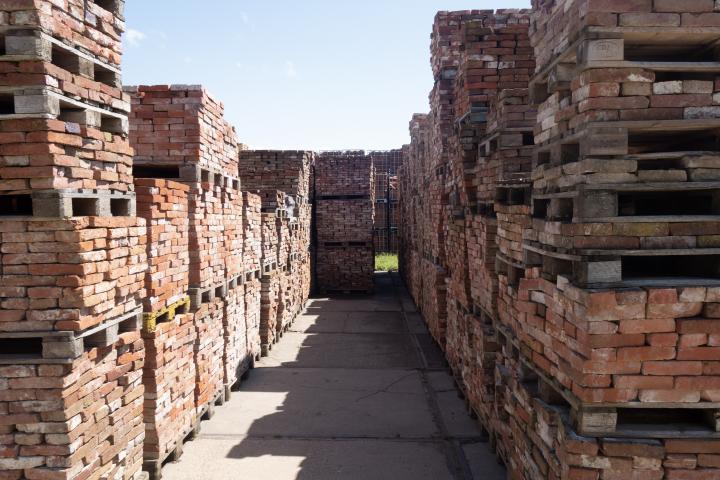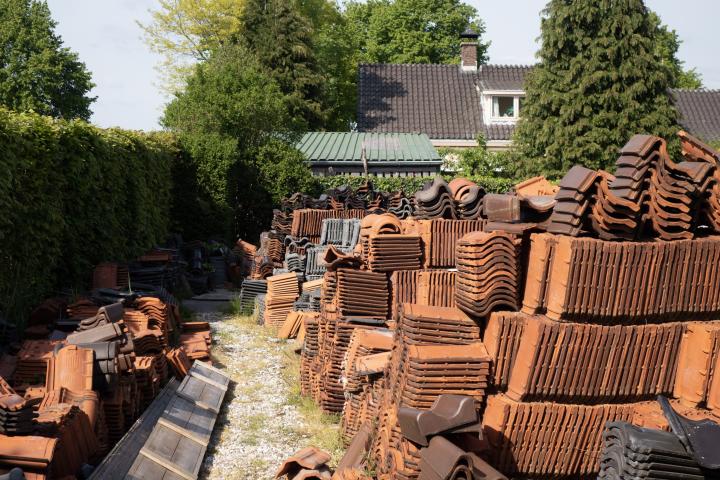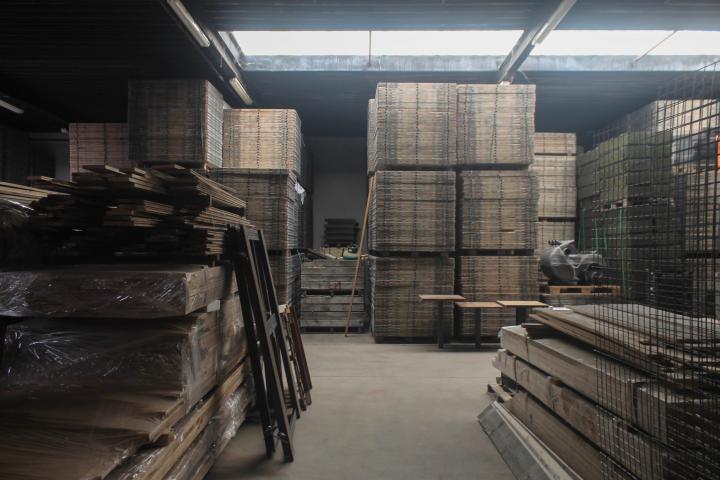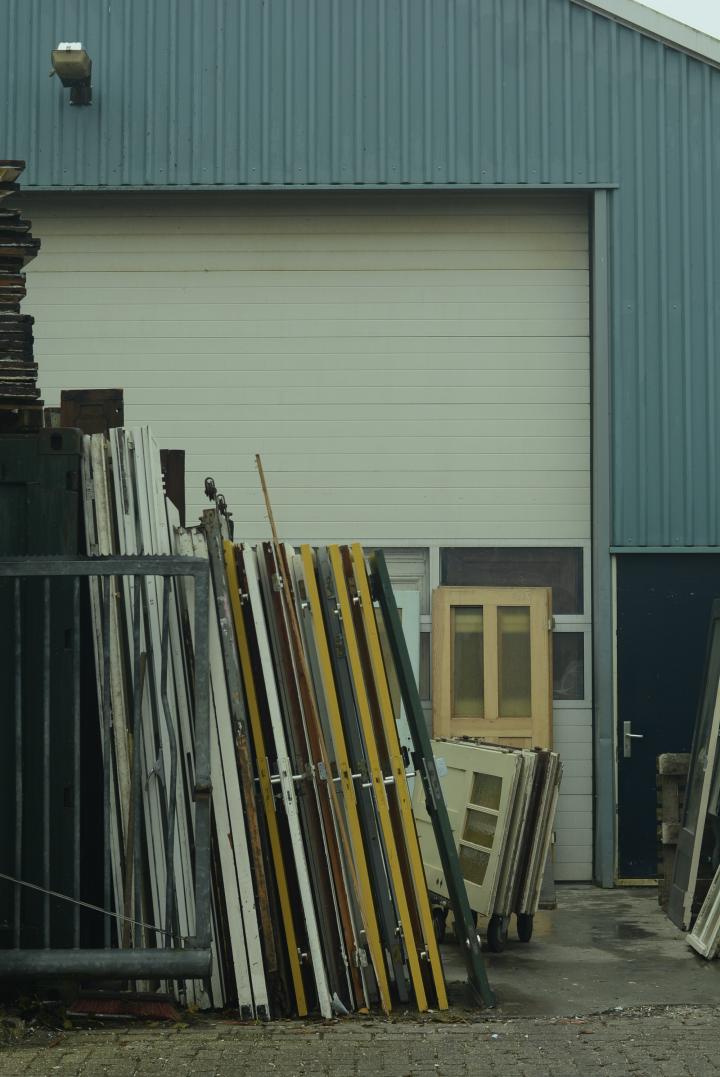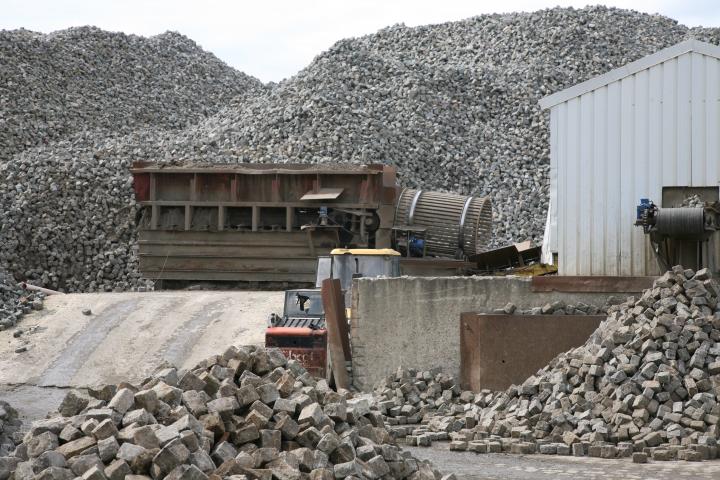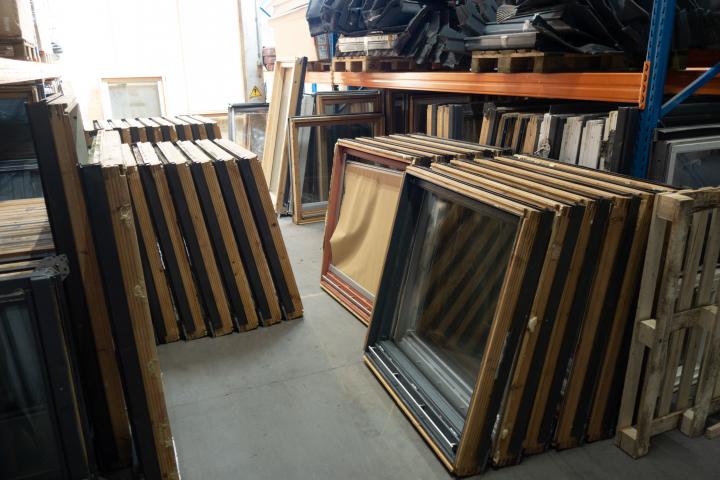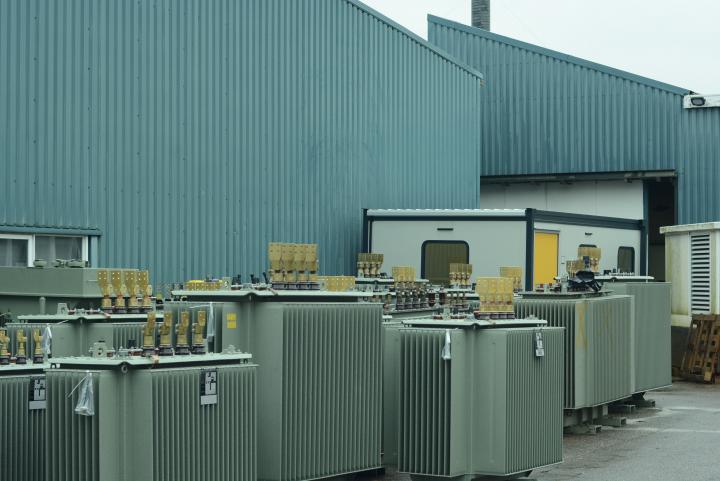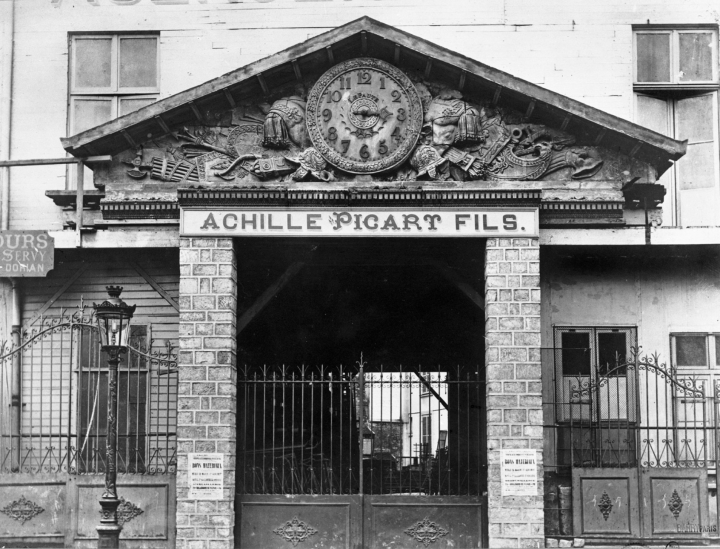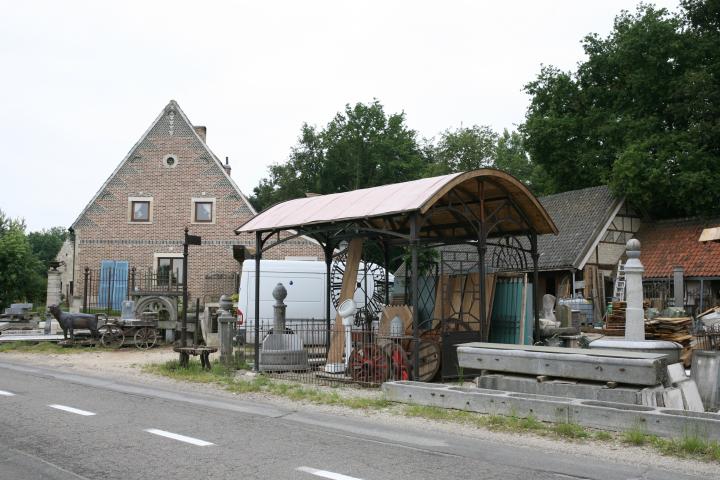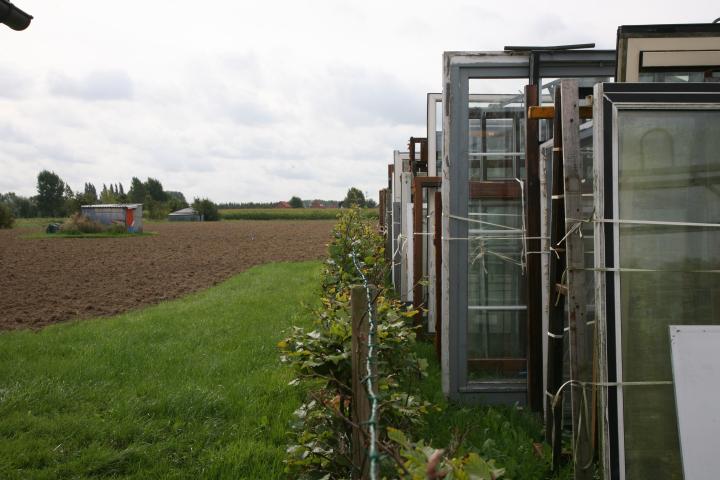Urban Mine Inc.
In its purest, conceptual sense the circular economy promises an endless cycle of reusable resources. With regard to the construction industry, the concept often revolves around the central metaphor of the urban mine, which understands the city as an accumulation of valuable materials and reusable elements. Through our work at Rotor and Rotor DC, we are continuously engaging with multiple actors on many levels within the reuse sector. The following text aims to demystify the urban mine metaphor by looking at a set of concrete situations, and by describing the framework wherein reuse is currently practiced, since both main elements of the somewhat romanticized term – the urban and the mine – need a more nuanced understanding in order to offer a clear understanding on circularity.
1. A short history of reuse in construction
First and foremost, the characteristics of an urban mine differ significantly from mines in the more conventional understanding of the term. Contrary to geological raw material supplies, which can be found concentrated by type within confined areas, the urban mine is by default heterogeneous and so far unpredictable, consisting of a wide variety of different materials in small quantities at any given location. Specific types of building elements are often dispersed and, in many cases, ownership varies between various kinds of private actors, making the exploitation of an urban mine very different from the exploitation of a geological mine. [1]
This is not a small difference. In fact, the current economic context highly favors regular mining with big investments resulting in even bigger returns. Urban mining on the other hand inevitably consists of a large number of small investments with uncertain returns. The responsible factors for the current situation become obvious when comparing two symbolic moments in the history of demolition: The demolition of the Palais de Tuileries in Paris in 1882 and the demolition of the Gillender Building in New York in 1910 – separated by only 28 years. [1,2]
During the grand urban renewal operations in Paris coordinated by Baron Haussmann at the time of Napoleon III., a lively reuse scene was thriving in the city. By order of Haussmann himself, reclaimed materials from demolitions had to be sold at public auctions. Archived reports still attest to the fact that these elements found their way to a whole series of small enterprises and craftsmen who directly benefited from the cheap resource. At the same time, deconstruction companies were able to profit from the sale of reclaimed materials. They even bid against each other for the right to deconstruct buildings.
Achille Picart was probably the most notable and active deconstructor and reseller of reclaimed materials in Paris at the time. In 1882 he received the commission to deconstruct the ruins of the Palais des Tuileries in the heart of the city, one of the largest remaining symbols of the monarchy. The contract specified a demolition time of just six months, a fact that deterred most of Picart’s competitors from participating in the tender and thus awarded him the contract at very low cost. As a deconstruction specialist, he was able to conclude the immense task in the relatively short time frame by mobilizing and coordinating enough manpower to effectively disperse the reclaimed stones in a continuous flux across his entire network of customers.
In 1910, Jacob Volk, another important actor in the history of the demolition became famous for the demolition of the Gillender Building in New York City. With a height of 83 meters, it was not only the tallest building ever razed, but Volk also succeeded to do so within an astonishing time limit of 45 days. The building was only 12 years old, fully functional and equipped with the latest technologies. However, in a growing city it had to make place for a bigger and more advanced building. The demolition marked one of the first modern encounters with the concept of obsolescence, [3] and as shown below, the beginning of the decline of reuse as a common practice in construction.
The construction industry naturally is part of the accelerating and globalizing economy. During the 20th century, deconstruction practices gradually dwindled due to aspects such as the rising real estate pressure, which turned to be demolished buildings quickly into expensive worksites: On the one hand, ever-rising land prices and rental income made profits from reclaimed material resale negligible compared to profits from real-estate operations. On the other hand, forced by delay penalties and speed bonuses for demolition contractors, deconstruction or demolition contracts needed to be fulfilled at an increasing speed. This in turn then resulted in growing insurance costs due to an increasing number of demolition related accidents, while a significant rise in worker’s wages occurred around the same time. Put together, these influences drastically shortened the amount of time a worker could spend economically on reclaiming and cleaning a material, before the operation turned into a financial loss. Adding aspects such as workforce mechanization, and the continuing diversification of building materials to the equation, it becomes obvious why organizing profitable salvage operations became extremely difficult and unpopular.
A New York Times article from 1928 illustrates how quickly the shift to a decline of reuse took place. It describes how new bricks still hot from the ovens were being delivered to building sites. The ovens were operating at full capacity to keep up with the sudden rise in material demand. Brick manufacturers were completely surprised by suddenly having to take over the market segment, which until then was occupied by reclamation dealers. [1]
2. Challenges of reuse in today’s construction industry
Almost overnight, the economic framework which had rendered the reuse of building elements feasible had disappeared. The building industry started evolving, and continues to do so today, shaped by forces prompting ever-increasing levels of consumption. New materials, freshly mined, cut and/or manufactured started to be introduced into construction processes in ever growing quantities year after year, which ultimately caused the construction world to lose touch completely with the specificities of reclaimed materials.
The desire to introduce new elements to the market quicker and in bigger volumes has supported the development of new legal frameworks, leading to a highly codified and bureaucratic construction sector. The process is based on clearly defined tasks for different actors, with formalized documents to mediate between them. Instructions from the architect considering a project and its use of materials are formulated into tendering documents, defining a series of legally binding obligations to which the contractor subscribes by accepting the job. There are good reasons for this divide between architect and contractor such as identification of liabilities and transparency of construction costs, however the mode of building production that is the result of it often neglects the way in which reclaimed materials are managed. A professional brick dealer does have a continuous supply of bricks, however, that doesn’t mean that every kind of brick is always available. Neither will he be able to provide proof of origin of the clay of which the bricks were made, or the exact test results about their pressure strength at the time of making. He will however be able to provide for exactly the right type of brick needed for the purpose of a specific project, but this kind of organic process where material identification influences the design and vice versa is very difficult to organise and requires a lot of effort for the different parties involved.
This results in the following revealing statistic: Only an estimated 1% of all materials implemented in new constructions today are reclaimed resources. [4] And they are distributed within a few types of construction where reuse is still common, such as industrial warehouses, landscaping and certain types of private housing. In big construction projects, reuse is a practice long lost.
3. Successful reuse in today's construction industry
The described historic developments did not make the practice of reuse disappear completely, but reduced it to increasingly smaller proportions. Those businesses that are still operational did so by means of specialization. Either they identified different types of reclaimed materials that are still able to compete price-wise with their equivalents from virgin resources, or they focused on materials that generated an added value beyond purely economic aspects, such as cultural or historic sentiment. Within its practice, Rotor has focused largely on such businesses and has been documenting them on its website Opalis.eu since 2011
. These businesses prove that reuse is not only a great hope for the future, but that there are feasible business models being executed in the present already with a wide range of reclaimed materials to work with.
Even though the dealers had to undergo a gradual process of specialization, the variety of dealers and materials remains remarkably high. One may find contractors who started stocking roof tiles from their demolition sites in the yard behind their office; resellers of very high-quality timber floors, with an impeccably maintained showroom; and dealers featuring cavern-like stocks filled with beautiful antiques and marble chimneys. Rotor has met with small, one-person businesses, having started, for example, as the owner’s personal hobby for antique floor tiles. Other dealers jumped on a market opportunity and started selling doors out of a warehouse on an industrial zone and yet others are family businesses that exist for generations and operate enormous outdoor stocks ranging up to 30.000m2, filled with 15-meter tall piles of cobblestones or bricks.
These companies have a long track record and ample experience. Throughout the years they have established a strong network of specialized suppliers, and know exactly how to deconstruct and clean a specific element with ease and minimal loss while maintaining material quality. A brick dealer can estimate before beginning a job, the amount of bricks which will be lost during deconstruction, how many during the cleaning, and for what purposes they can be used afterwards. Often the building elements sold by these dealers are provided with a lot of necessary information to assess their “fitness-for-reuse.”
Paradoxically, the most circular actors in the field of construction today are the ones that are advertising it the least. After decades of finding ways to survive, their marketing focus instead lies on the unique aesthetic of their material’s patina and the history behind its acquisition. They advertise the superior quality of their reclaimed product as opposed to a new one, or the fact that it is cheaper. Or they focus their energy on small scale private projects that still offer some space for a reciprocal relationship between material and design. The ecological benefits of using reclaimed elements has little commercial viability in the construction industry (yet).
At the same time, the manufacturing and installation of construction materials also evolved, under the influence of the same mechanisms that drastically reduced reuse practices. Both were becoming faster and cheaper. By the 1970s most tiles had become so thin, and they were glued to the floor so strong that they couldn’t be salvaged anymore without breaking. Bricks were being placed using cement mortar instead of lime mortar, which is easier to work with during construction, but impossible to remove. Additionally, production prices for these materials had become so low, that salvaging such products was and is simply not feasible. The construction sector wasn’t interested in reclaimed materials, and dealers weren’t interested in new construction materials anymore. Luckily, the first exceptions to this rule started to appear around the beginning of the 21th century. Heightened floor tiles, technical installations, ceiling lights and selected window types are among the elements produced from 1970s onwards that are currently available on the reuse market.
Although not all of these market opportunities have been discovered yet, the general offer of reclamation dealers today reflects more or less what the sector is capable of doing within the limits of a competitive market-based economy. All things considered, it’s still a lot.
4. Locating reuse within the urban context
We don’t have to change our point of view much for an analysis of the urban element of the metaphor. Let’s return to 19th century Paris: Located at the 12th Arrondissement, not far from Place de la Nation, Achille Picart’s warehouse had a very strong presence in the city. His stock of salvaged stones, ironwork, and decorative elements was clearly visible from the street, and one could hear the sound of tools and see workers busy reconditioning items when passing by. After successfully deconstructing the Palais de Tuileries in under six months, Picart kept one of its pediments, known as "the one with the watch," and used it to decorate his warehouse façade. This heightened his presence in the city even more.
Similar scenes are hard to find nowadays. Because of the same rising land prices that prevent a lot of reuse in the first place, most reclamation dealers have left the inner cities. While some of them might still have a small showroom in the city center, warehouses are very rarely a part of the urban fabric. In Rotor’s experience, visiting a reclamation dealer equals getting into your car and driving to an anonymous industrial zone or a plot somewhere along a busy road in between two cities. On opalis.eu, Rotor has documented stacks of reclaimed windows located just in the open surrounded by fields. Sometimes the plot of a reclamation dealer presents itself through a mountain of cobblestones competing for sunlight with the surrounding trees, or through a set of tiles or architectural antiques displayed strategically at the end of their land, facing the road next to it. But in all these cases, they have become more a part of the Zwischenstadt and even the countryside, rather than the urban fabric. This does not mean that they are absent though. The urban mine would be nothing without their capacity to stock and prepare.
While this might seem arbitrary, the disconnection between city and dealer goes beyond this geographical disconnection. Although the extent of this phenomenon is difficult to assess, it is not uncommon for dealers in Belgium to sell reclaimed materials to customers in Australia, America, Russia, and other parts of the world. These clients are looking for authentic Belgian materials to furnish for example a Belgian-themed bar, or to distinguish their terrace or kitchen interior from their neighbors’. Because global transport costs are rarely an issue for clients looking to add an “authentic” or “eco-friendly” label to their project, there is a clear separation between locally sourced materials and the now global market. Rotor DC often receives international shipping requests for elements, which used to cycle within a very small radius - a trend that increased spectacularly after the opening of the online shop in 2017. Via the world wide web, reclamation dealers are now part of a highly globalized world, in the same way manufacturers of new products are. Today, the pediment from the Palais de Tuileries would probably be promoted online, with the implicit possibility to be shipped all over the world.
And not only are locally sourced European materials sold around the world, materials sourced around the world are being sold in Europe, or more generally, in the West. Sometimes, these operations are nothing short of cynical, appropriating the mechanism of a globalised neoliberalism. In the 1990s, the New York Times published an article about a company active in the repurposing of wood reclaimed in Asia for the American market. The demand for this type of “guilt-free” wood skyrocketed so quickly that it became a market force, encouraging the dismantling of existing Asian houses that were still being used, and greatly disrupting local economies. [5]
5. Scalability
The complexity of reuse raises interesting questions about the standards of the existing material economy. As described, reclaimed materials are often quite different from what today's construction industry is accustomed to. They demand a more reciprocal design process where materials and design influence each other, and where there is time to draw up project specific solutions, specific ways in assessing their fitness-for-reuse, and general room for flexibility. Reclaimed materials often reject in one way or another the easy scalability of their application. [6]
Similarly, the preparation of reclaimed materials remains a predominantly manual and variable task. Preparing them is, in many cases, quite different from working along a mid-20th century industrial assembly line. The preparation of reclaimed materials, which is really the essence of what a reclamation dealer does, include the cleaning of bricks; preparing of parquet or wooden beams for reinstallation; dismantling and cleaning of radiators; deconstructing different kinds of partition walls on the 20th story of an office building before transporting them down to a truck waiting on a busy street. As every building, and every batch of used materials is different, and often relatively small, the majority of tasks related to reuse requires a significant level of knowledge, autonomy, flexibility, and a good understanding of the tools and methods that are being used. [1]
Up until now, this meant that reuse was local work. For a majority of dealers, any preparation work is done inhouse or outsourced only on a very local scale. The logistics combined with material knowledge necessary to carry out all reclaim and reuse operations result in reclamation dealers being predominantly small to medium scale businesses, commonly family-owned and employing their third or fourth generation. Very few of them have scaled-up beyond this level. Seen as a part of the complete material economy, this forms a remarkable alternative to our contemporary business culture.
6. Opportunities and the future of reuse
But we find ourselves at a tipping point. Similar to other economic fields, small to medium scale businesses are slowly disappearing. [7] Their owners have trouble finding successors. A considerable share of the reclamation dealers is currently run by people that already have surpassed their 50s. Some companies have started selling off certain parts of their stock after years of decline, and others simply stop existing, without new traders to replace them. Interestingly however, in parallel to this decline of companies in the reuse sector, interest in circularity and reclaimed materials is significantly increasing at the moment. But the significant rise in demand of reclaimed materials that would be needed to revive the sector is not seeping through.
This prompts the question: what kind of circular economy is it that is currently being promoted, and is it the circular economy that we should want?
Because what makes reuse interesting for Rotor is exactly what makes it difficult in the current construction world. We could approach circularity as a way to rediscover alternative practices and narratives. First by acknowledging the current qualities of the existing reuse market, such as for example local and unalienated labour in small scale companies, often organised around the needs of the workers. These qualities are key in working towards a truly sustainable future on more than only a metabolistic level. Rather than shaping reuse solely for the needs of the contemporary construction world, rethinking these needs to the particularities of working with reuse is an equally important part of the equation. If we succeed in doing so, there certainly are unexplored opportunities waiting to be attained: different types of materials could be salvaged and/or cleaned more efficiently, new categories of contemporary materials that are currently still being overlooked could be reclaimed, missing links between contractors and dealers could be restored, and reversible ways of installing materials might again be applied.
In the midst of the endlessly multiplying realities of our current world, regarding closely and attentively might be the guidance we need to form new, maybe counterintuitive alliances and reintroduce some of the logic of Achille Picart in Jacob Volk’s construction world. What that will look like we have no idea, but we hope it will be radically different than the Urban Mine Inc.
Details
This article has been written within the framework of and funded by the Interreg NWE FCRBE project. At the moment of writing, the authors, Emmanuel Cortés Garcia and Arne Vande Capelle, were respectively employed by Rotor DC and Rotor.
The text appeared first in German in: Heisel, F., & Hebel, D. (Red.). (2021). Urban Mining und kreislaufgerechtes Bauen: Die Stadt als Rohstofflager. Fraunhofer IRB Verlag.
Bibliography
[1] Ghyoot, Michaël; Devlieger Lionel; Billiet Lionel; Warnier, André: Déconstruction et réemploi: Comment faire circuler les éléments de construction. Lausanne: Presses Polytechniques et Universitaires Romandes, 2018
[2] Byles, Jeff: Rubble: Unearthing the History of Demolition. 1st ed. New York: Harmony Books, 2005
[3] Abramson, Daniel M: Obsolescence: An Architectural History. Chicago; London: The University of Chicago Press, 2016
[4] Salvo: BigREc Survey. A Survey of the UK Reclamation and Salvage trade. 2007; This research has been conducted for the UK and Ireland only, but there are no reasons to believe that the situation is different on continental Europe.
[5] Rotor; DogA; Dansk arkitekturcenter, eds: Behind the Green Door: A Critical Look at Sustainable Architecture through 600 Objects. Oslo, Norway: Oslo Architecture Triennale, 2014
[6] The concept of the ‘non-scalable’ is derived from: Tsing, Anna L.: The mushroom at the end of the world: On the possibility of life in capitalist ruins. Princeton NJ: Princeton University Press, 2015.
[7] Tourdjman, Alain; Le Dret, Thomas: La cession – transmission des entreprises en France. Les Carnets de BPCE L'Observatoire, 2019; The article does not specifically target the reuse sector, but the findings of the authors align well with our experience.
Images
the first image: © Rotor DC
the image of the warehouse of Achille Picart: © GETTY images
all other images: © Opalis
